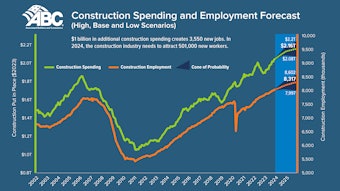
Why is construction lagging behind so many other industries when it comes to digital transformation? In a recent article in Building, a well-respected information source for the construction industry, journalist Thomas Lane noted that the sector…“has been rather slow to embrace the full benefits of digital technology, which is hampering efforts to overcome its low productivity, high costs, and project overrun problems.”
One major issue involves construction companies’ skepticism related to the cloud. There are misconceptions about how expensive and complex moving to cloud-based project management software will be. More often, any challenges posed by the switch to cloud-based software are far outweighed by the benefits.
If you or any of your colleagues are harboring concerns about the cost and disruption of cloud migration, this article should put those concerns to rest. Here are five misconceptions about moving to cloud-based project management software that can be quickly dispelled with a greater understanding of cloud-based software’s true capabilities, as well as an appreciation for its myriad nuances.
Misconception #1: Cloud Migration Is Expensive
Regardless of the technology, moving to a new software package inevitably has to be a deciding factor; the truth is, staying with your existing project management software will always be the least expensive, short-term option. But when you compare the longer-term cost of on-premises versus cloud technology, it is the cloud solutions that will generally provide greater value for the money.
Cloud-based project management software almost always translates to reduced capital expenditure and IT overhead. You will likely have to pay for initial set-up and data transfer, but moving to the cloud means you’ll no longer have to pony up significant capital for on-site upgrades and maintenance, as everything can be managed remotely.
Likewise, it’s always less expensive (and easier) to scale cloud software when new users and new sites are added. What’s more, your project management platform will perform as it was intended for far longer than a server-based solution, increasing its lifetime value and creating a far more favorable rate of amortization.
Many cloud software providers can package your ongoing maintenance and customer support costs into a monthly subscription fee, giving you a clear idea of the ongoing financial commitment needed to run your cloud-based, project management platform. No surprises, just a single, set cost that can be plugged into your spreadsheet.
Misconception #2: It’s Complex to Integrate Cloud Software
Cost aside, the other significant barrier to onboarding cloud software is the disruption it might create for your company’s operations. It’s possible that the disruptions caused by installing your last project management software are still haunting you.
Conversely, it’s far less painful to migrate to the cloud than it is to implement on-premises technology. To begin with, the most obvious upside is that there’s no physical installation as you can access the software directly via the web. A well-designed, cloud-based project management platform can easily integrate with your existing systems to provide greater remote access capabilities.
While some work may be required from your internal IT resources to ensure system compatibility and to synchronize data, your software provider should factor this scenario into their implementation plan. If necessary, they can customize your platform to bridge old and new technologies.
The bigger point is to lean on the expertise of your chosen technology partner. Remember: they’ve done this before. If they’ve got a sound industry track record, they’ll have extensive experience integrating technologies via the cloud, meaning that the transition should be virtually seamless. And if any technical issues should arise, it’s likely something they’ve encountered before, so a speedy resolution can usually be found.
Misconception #3: Internet Connectivity Restricts Software Access
There’s no getting around the fact that you’ll need an internet connection to use cloud-based project management software. This leads some companies to believe that the technology is unsuitable for them, given their concerns about the stability of network connections, internet speed, and unplanned downtime.
While cloud-based software does require continuous internet access, there are ways to make it more accessible. A mobile app can improve project performance, as site staff can access instructions and log updates as they go, rather than waiting until weekly meetings to provide feedback.
Misconception #4: Storing Data in the Cloud Is Less Secure
Storing data remotely might seem risky, but this sentiment is based far more on perception than reality. You and your data can be very well-protected if you choose a project management platform with encrypted data transmission and secure data storage.
The truth is, the cloud can actually protect your company from technical failures and data breaches. If you’re using an on-premises solution, a problem with the server can lead to potential data losses and project delays. But cloud-based solutions regularly back-up information and store it securely in multiple locations.
You can also use secure logins to control which project stakeholders can access your software, as well as restrict what they’re able to do within the system. Setting permission levels will help you control how data is handled and ensure that access to information is compliant with regulations such as GDPR, the European union regulation on information privacy.
Misconception #5: Accessing Data Via the Cloud Can Cause a Performance Lag
Some companies worry that moving their project management software into the cloud could compromise performance, especially if they manage large volumes of data. However, data latency is not usually a problem for cloud-based applications – even those requiring high-speed computing or real-time processing.
In fact, it’s often server-based software that struggles to maintain speed as data volumes increase, leading to performance bottlenecks. Cloud services can scale resources dynamically based on the program’s need, ensuring that project management software remains efficient and responsive. If computational demand increases, the cloud platform simply allocates more resources.
Expert Support for Your Cloud Journey
It’s natural to feel cautious when you’re investing in recent technology; you want to know it’s the right fit for your company. So, rather than making the transition to cloud software on your own, let your chosen technology vendor assist your journey. You should expect your vendor to be far more than just an “order taker;” rather, they are your guide to a successful and problem free installation.

























